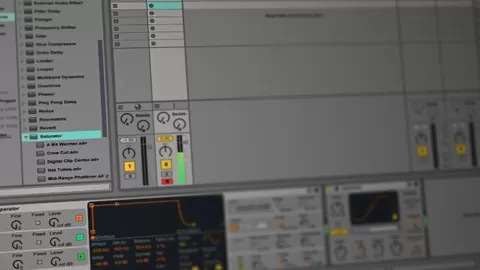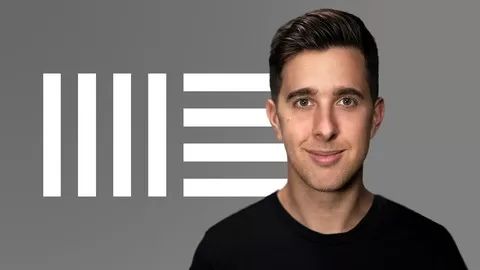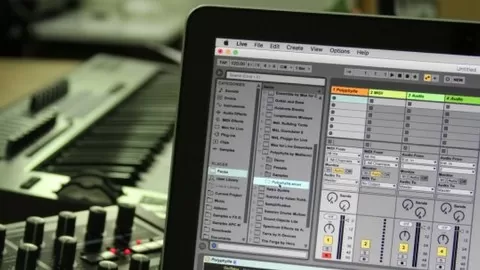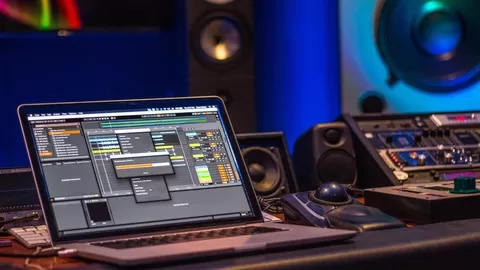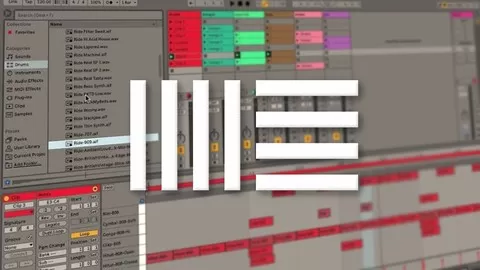This EMP Fundamentals Bass course covers everything you need to know about the bass element of your music. This course aims to cover areas such as:
• Bass monitoring
• Keys & scales
• Rhythm & groove
• Tuning
• Pitch & melody
• Embellishments & advanced techniques
• Scale modes and accidentals
• Bass synthesis in a range of styles
• Mixing techniques covering: balancing, stereo image, phase, kick & bass relationship, eq, side chain compression, dynamics and parallel configurations.
By the end of this course you will have a firm understanding of the compositional, production, sound design and mixing techniques required to write any kind of bass-line for your productions.
Below is a break down of what will be covered in each lesson:
1 – Intro
A quick intro highlighting the structure of the course, topics covered, and why its so important to understand bass fundamentals from a compositional, sound design and mixing perspective.
2 – Bass Monitoring
In this first video in the EMP – Bass fundamentals course we cover all aspects of bass monitoring. In the first part of the video we cover the different monitor types such as headphones and nearfield monitors and their pros and cons. We then take a look at how to best utilise the space you are working in, such as how to align your speakers and ensure you are keeping the affect of room modes to a minimum. We then expand on this knowledge with further information on how to combat any further underlying acoustic issues through the use of acoustic treatment panels and bass traps. The final part of this video covers setting your listening levels correctly to reduce your ears natural bias and allow you to work for longer without experiencing ear fatigue. finally we will cover methods to reference and make accurate and instant A/B comparisons in Ableton Live.
3 – Keys & Scales
In this video we will cover the basics of the keyboard, starting off with the chromatic scale and then covering the major and minor western scales and their formulas. We will then explain what an interval is and explain the terminology used when talking about scale degrees.
4 – Rhythm & Groove
This video explains the push and pull concept that defines rhythm in an otherwise quantised piece of music. we then cover the need for syncopation and explain how it crosses the natural rhythm to create a more bouncy groove. Finally we cover the affect of the ADSR envelope on the groove and how this can be manipulated to alter the feel of a drum pattern.
5 – Tuning
In this video we will cover a range of methods to tune entire songs, single tracks and individual samples. firstly we cover how to find the root key of a record using a spectrum analyser which allows us to identify the main notes used for the kick and bass elements.
We then cover alternative methods such as using a sine wave device from Ableton operator, or simply by humming or whistling and matching this with notes played on the keyboard. We then explain some techniques to double check that you have the right key by playing octaves and chords to see if they fit with the music.
In the second part of the video we move on to tuning samples such as kick drums using the tuner and spectrum analyser. Finally we explain micro-tuning and how we can do this to get our samples pitch perfect in Ableton.
We finish this video with an explanation of the beating effect between two sounds that are similar in frequency. This can be used of help tune parts but is predominantly used as a creative LFO effect for basses.
6 – Pitch & Melody
In this video we will cover the fundamental theory that goes into writing bass melodies. The three main methods we cover are:
• writing a bass melody that underpins chords or lead melody
• writing an independant bass melody or one that works in contrast
• writing a bass part as a leading instrument
In the second part of the video we explain these theories in great detail. covering:
• space, rhythm & harmony
• harmonic & melodic intervals
• scale degrees & tendency tones to create tension & resolution
• chord tones & non chord tones when building a bass from chords
In the final part of the video we demonstrate the steps to write a bass melody.
7 – Embellishments & Advanced techniques
In this video we focus on the energy area of the ‘space, rhythm, harmony, energy’ concept.
by the end of this video you will understand the more advanced bass-line embellishment techniques such as: octaves, call & response, paired phrasing & cadences, harmonic & rhythmic cells & contours.
8 – Modes & Accidentals
in this video we will build on the keys and scales lesson by teaching the 7 scale modes, the moods that can be created with them and which notes within the mode contribute to that sound, and finally the formulas used to create these modes in any key. We then go and learn about how we can break many of the rules we have learnt so far with the use of accidental notes.
9 – synthesis – Tech House Basses
in this video we will create some basses that are commonly heard in the tech house genre from popular plugins such as Massive, SubBoomBass & Operator.
10 – Synthesis – Generic Basses
In this video we will make some generic basses that are suitable for any genre. Firstly we create a sub bass using Native Instruments Massive, then we create a Moog style bass using Sylenth.
11 – Synthesis – Techno Basses
In this video we cover a few methods used for creating techno basses, such as using filtered kicks and toms, or the common side-chain reverb effect. We then build on this by using some distortion and modulation effects to add more movement to the bass-lines.
12 – Synthesis – Acid Basses
In this video we explain the thought process used to create an acid bass sound. We then use this concept to build an Ableton instrument rack with customised macro mapping controls which allows us to set limits for our acid bass instrument so that we can recall it in future projects. We then demonstrate how we can use this knowledge to create a similar acid sound in sylenth, demonstrating that most sounds can be recreated within any plugin.
13 – Bass Processing and Mixing 1
In this first mixing video we will cover a range of bass mixing techniques spanning areas such as:
• panning & stereo image
• phase alignment
• kick and bass relationship
• subtractive eq
• creative eq for colour & saturation
14 – Bass Processing and Mixing 2
In this second mixing video we will cover a range of bass mixing techniques spanning areas such as:
• side chain compression
• dynamics and compression
• saturation & distortion
• parallel configurations
